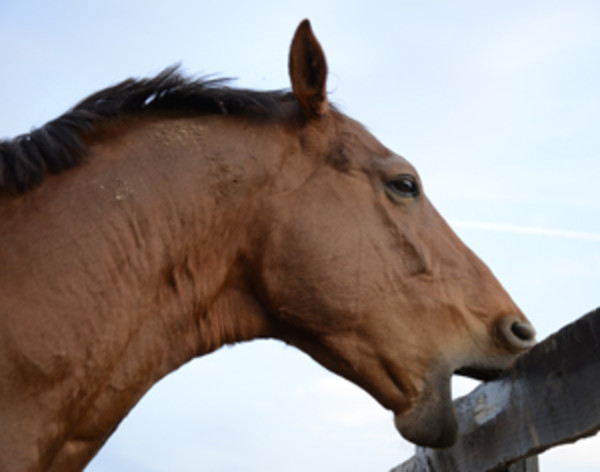Links between recurrent colic and stable vices explored
- August 16, 2023
- ⎯ Equus
A study from England provides further evidence that horses who crib are at greater risk of recurrent colic and also identified weaving as another habitual behavior associated with digestive upset.

University of Liverpool researchers collected data on 127 horses with a history of medical colic, interviewing the owners at four-month intervals. The information collected included each horse’s health status, behavior and management routine.
“We asked owners to inform us about any further colic episodes occurring during the year,” says Claire Scantlebury, BVSc. “During the course of the year, some horses had colic more than once, and these episodes occurred at different times during the follow-up period. For some horses this happened quickly; for others, colic recurred up to a year or more later. This cohort study was able to examine the risk factors involved in a horse having a further episode of colic.”
The data showed that horses who cribbed were 10 times more likely to have repeated episodes of colic. “This supports the growing evidence that horses who exhibit crib biting or wind-sucking behavior may be at greater risk of colic,” says Scantlebury, who cautions that the study does not indicate that cribbing causes colic, simply that there may be a link. “The reasons for this possible link are likely to be complex and may include a combination of particular aspects of a horse’s management, his behavioral or personality traits, or physiological reasons, to name a few examples.”
The study also revealed a previously unidentified link between weaving and recurrent colic. Horses who weaved—shifting weight from one forefoot to the other with a swaying motion of the head and neck—were four times more likely to colic repeatedly.
“Although weaving is classified as a behavioral stereotypy, it may have several underlying causes, some of which may be similar to crib-biting,” says Scantlebury. “Previous studies have suggested a number of possible factors that may lead to the development of weaving, including confinement within a stable, reduced social contact with other horses, anticipatory behavior or management factors. Some of these have already been identified as risk factors for colic.”
Not surprisingly, the researchers found that increased turnout time reduced the risk of colic: Horses turned out for 12 hours a day had almost half the colic risk than did those who were kept in stalls. The researchers advised that any changes be introduced slowly and pasture management and access to grazing be appropriately balanced to minimize colic risk while considering laminitis risks and other health concerns.
Reference: “Management and horse-level risk factors for recurrent colic in the UK general equine practice population,” Equine Veterinary Journal, April 2014
This article first appeared in EQUUS issue #444.
Don’t miss out! With the free weekly EQUUS newsletter, you’ll get the latest horse health information delivered right to your in basket! If you’re not already receiving the EQUUS newsletter, click here to sign up. It’s *free*!





